Digital & Print Membership
Yearly + Receive 8 free printed back issues
$420 Annually
Monthly + Receive 3 free printed back issues
$40 Monthly
Isamu Noguchi
A Legacy Split in Two
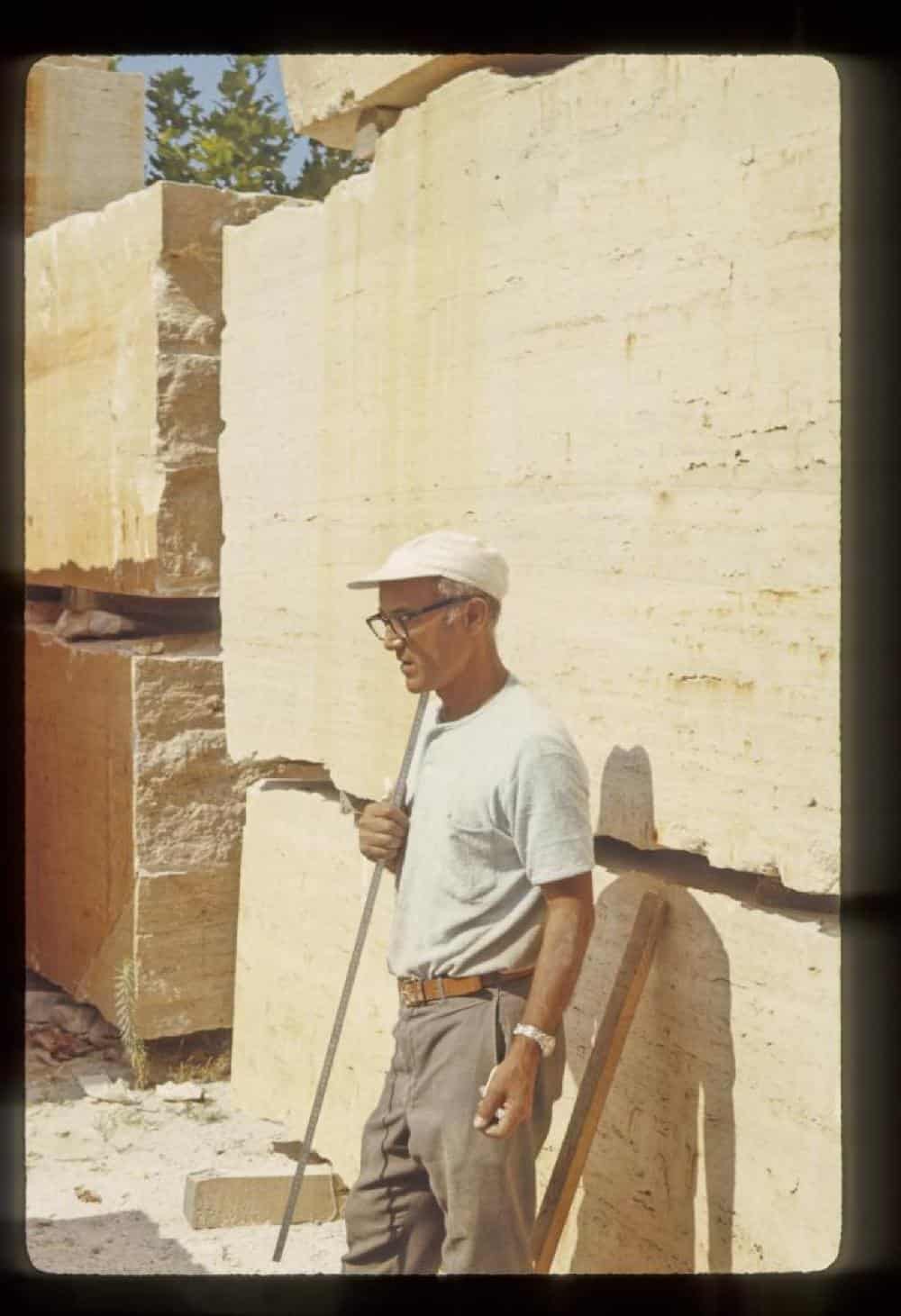
Olmec and Muse (1985), basalt; by Isamu Noguchi, sold at auction in 2017 for $4.98 million. A title, a year, a material, an artist, the passage of time, a price. A legacy of cultures, a legacy of earth, a legacy of an artist, and “legacy” as a facetious pun—money or property left to the living by the dead.
What does it mean to continue a legacy?
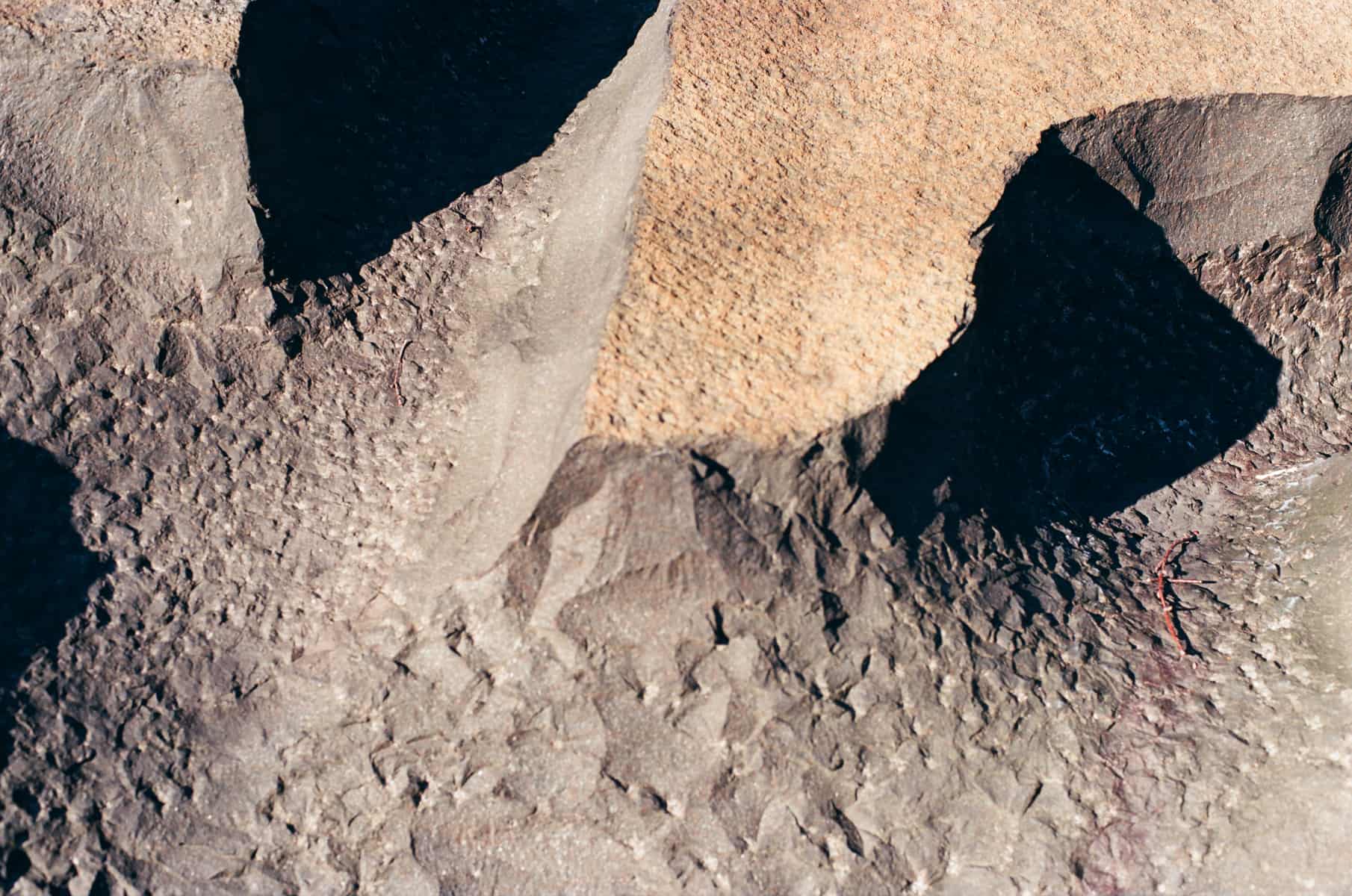
Even a simple understanding of Isamu Noguchi’s work will illuminate some meaning from a piece like Olmec and Muse. It looks to ancient cultures and forms, it is crafted from the same material as the Mesoamerican Olmec heads, and it is codified by pointing back to the relationship humans have with the universe—the Muses. In 1985, the same year Olmec and Muse was made, Noguchi became the first living artist to establish a museum solely for his own work—a space intended to let the art exist for its own sake, free from the noise of the art world. Noguchi was born in 1904 before the invention of the airplane and died in 1988, just a few months prior to the invention of the World Wide Web. His life spanned the touchstones of the 20th century as ease of communication and travel grew on a global scale. Yet, despite these new horizons, the core personal, spiritual questions born into each individual remained present within the artist’s work. “Where was home? Why are we here? What will I leave behind?”
Noguchi ran to the past and pushed toward the future to define the present. He learned from and worked with the peoples of the world—the laborers, the artists, the gardeners, the craftspeople, the activists, and the survivors. It was through global communities that he found himself as an individual.
On one hand, Noguchi is most known for volunteering to be incarcerated in a Japanese-American concentration camp during WWII as an act of solidarity with west coast Japanese-Americans (Noguchi was living on the east coast at the time), while on the other hand, Noguchi is most famous for his Akari light sculptures—a staple in mid-century modern furniture. What many people may not know, however, is that these two hands hold one another. Having witnessed what it meant for people to recreate a home in a desert barracks with only the things they were able to carry, Noguchi designed all his paper lanterns to be flat packed and transported easily. The lamps are a modern continuation of tradition, handmade in Gifu by skilled craftspeople, they are affordable sculpture and a portal to transform any room into “home.”

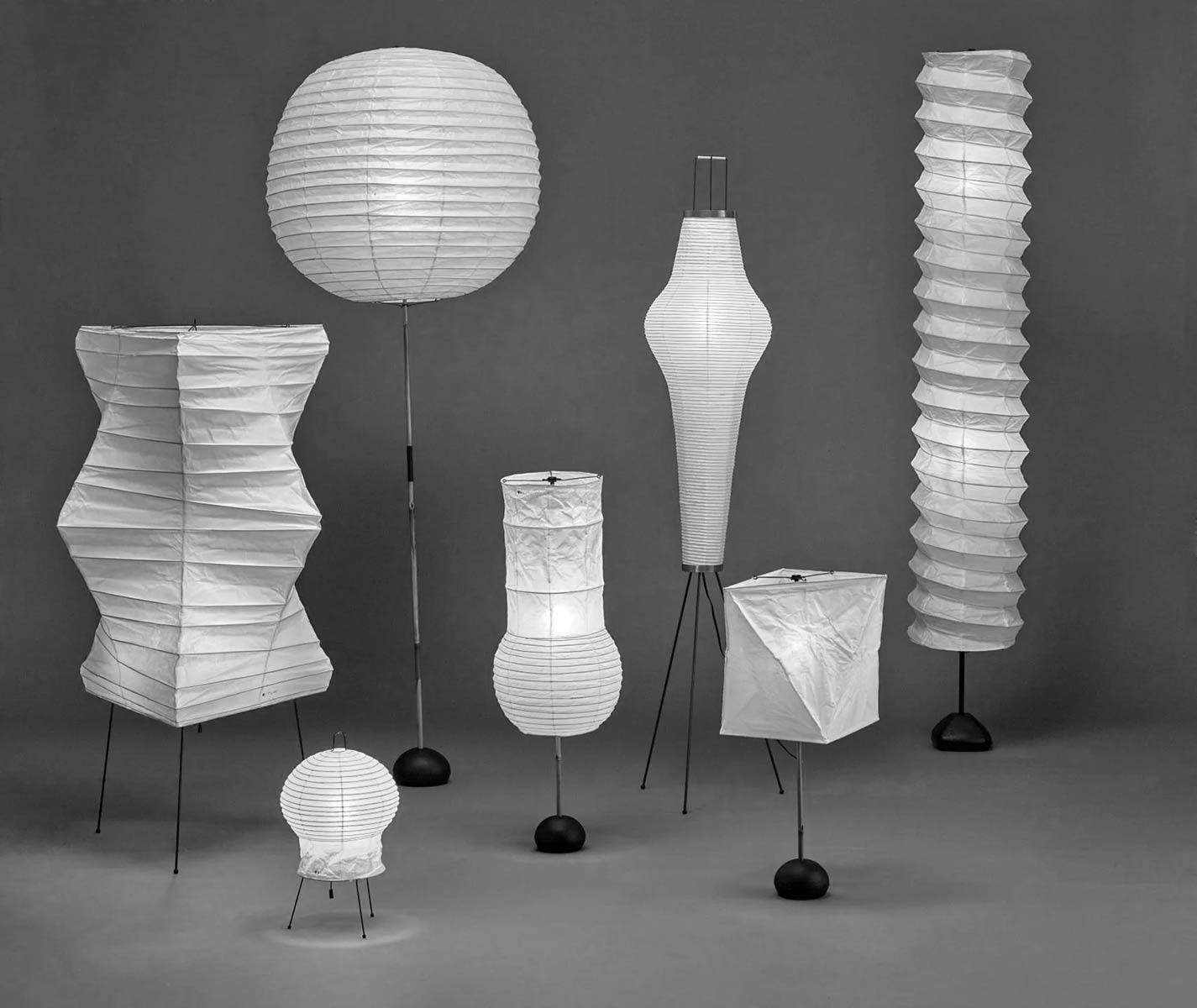
In 2017, the same year that Olmec and Muse set the record for the most expensive Noguchi piece sold at auction, The Noguchi Museum’s exhibition, Self-Interned, 1942, focused on the artist’s time, experience and the aftermath of being “interned.” Opening on January 18th, the exhibition was born into the first inauguration of Donald Trump. In February, 2017, The Day of Remembrance was the most highly attended day in the Museum’s history up until that point. Humanity and politics intersected at the museum, allowing people to join in community and to consider the most basic existential human questions, “Where was home? Why are we here? What will I leave behind?”
This year, the New York City chapter of The Day of Remembrance Committee was completely absent from The Noguchi Museum. As an organization that highlights not just Japanese-American civil rights issues, but has also deeply considered the plight of the Palestinian people in the struggle against oppression, DOR NYC, along with other community organization, programmatic partners and artists cut their ties entirely with The Noguchi Museum after Director Amy Hau in collaboration with Deputy Director Jennifer Lorch and board Co-Chairs Susan Kessler and Spencer Bailey banned staff from wearing keffiyehs. The artist’s legacy had completely inverted on itself.
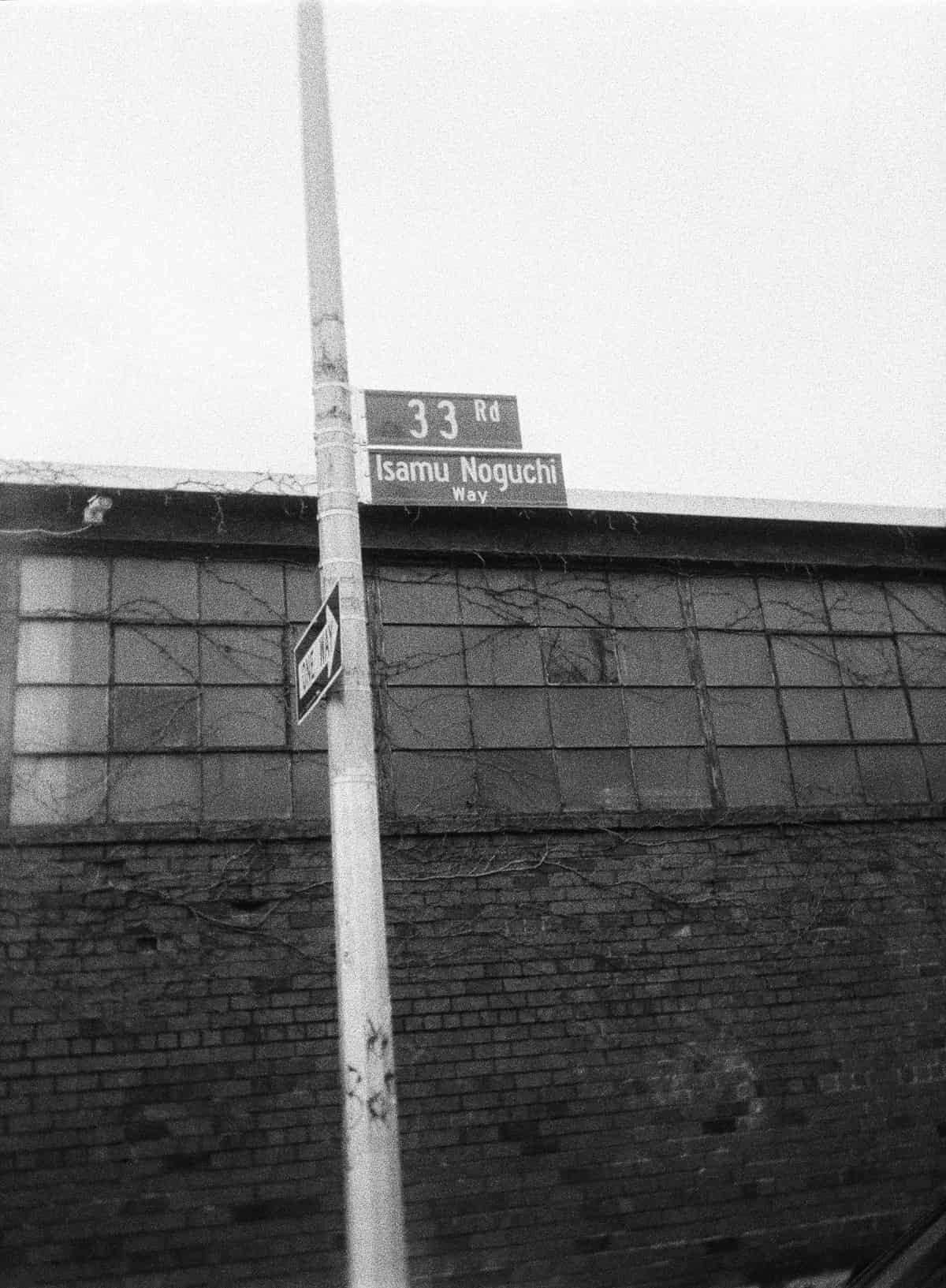
So what happened in eight years? The truth is, behind closed doors, The Noguchi Museum was always rife with labor issues and in some ways, the keffiyeh ban can be seen as the straw that broke the camel’s back. (The longer history of racism, power imbalances, and a hostile work environment was exposed in a 70,000-word document we released last month.) The staff lived in dual realities—what the artist’s legacy was in principle versus how the museum’s board and top two leaders ran the institution in practice.
Noguchi’s cultural prominence continued to rise. In 2023, his sculpture The Family (1956) set a new auction record, selling for $12.28 million. That same year, internal turmoil shook the museum: the CFO resigned in protest, citing unworkable and racist conditions, and several staff members were hospitalized. A recurring pattern of demand letters, racist firings, retaliation, and protest resignations have been disturbingly commonplace.
The sanitization, depoliticization, and whitewashing of an artist is hardly a new story. In fact, it’s the norm. But what was surprising was the lengths to which fear could drive leadership to maintain “comfort.”
Leadership clings to absolute power not for peace of mind, but because their sense of self depends on control. When collaboration itself is seen as a threat, power can only feel secure through the destruction of community. When the institution’s original purpose was to continue the legacy of the artist, we wonder whose legacy it is meant to protect now.
The staff voted unanimously to unionize in January 2025, something that is not just rare, but telling. The community, now also acutely aware, has stood up for the staff, the artist and the future of the institution.
The art world has always reduced historical activism to background decoration, and it has done so in the name of “legacy.” But as people of conscience, we know the other meaning of the word—we know what can’t be bought or sold.
Our community demands letter, first delivered to the board on May 23rd, is still available to read and sign at bit.ly/NoguchiDemands
We are continuing a legacy—a sculpture is more than a stone.
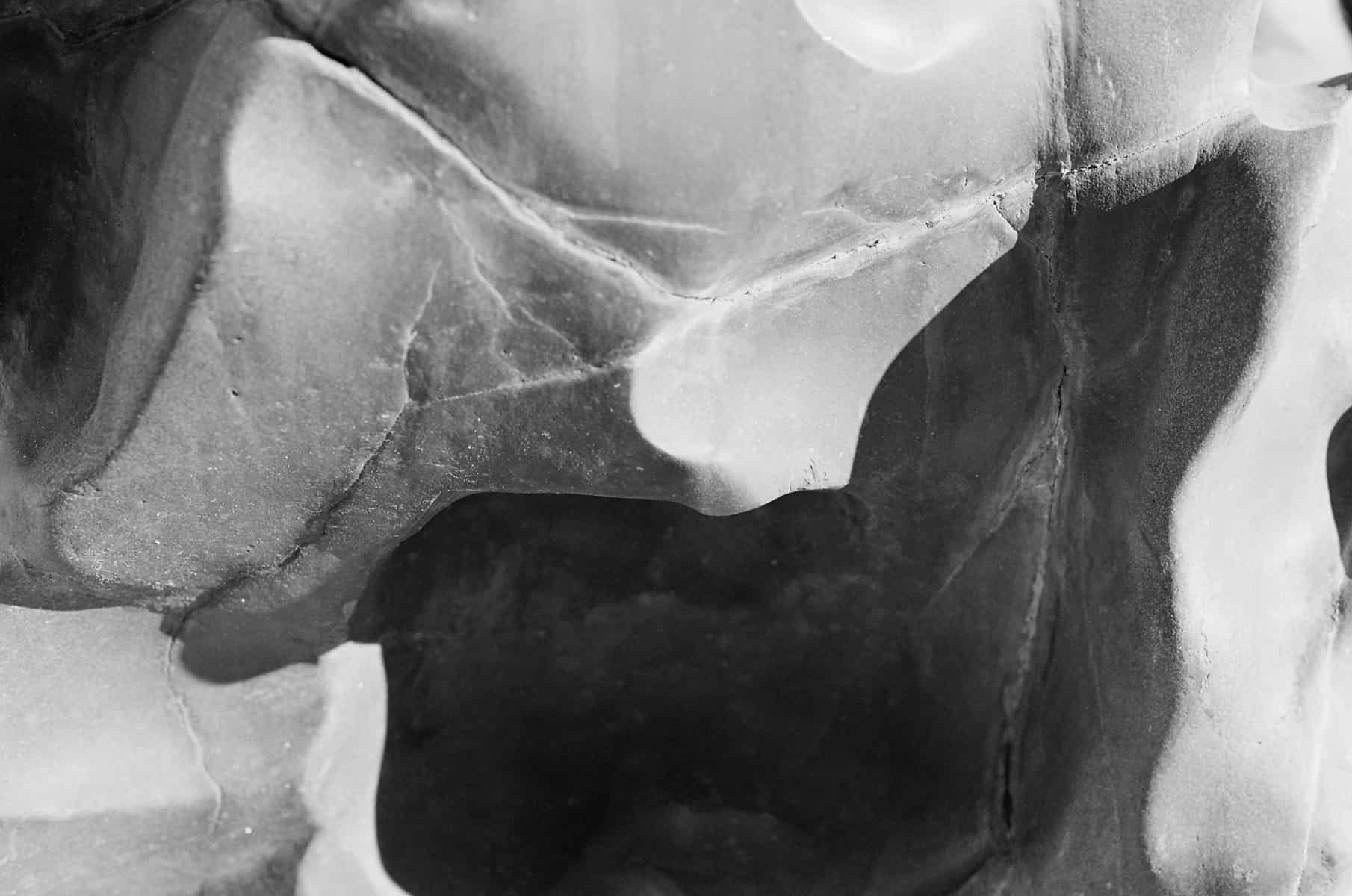
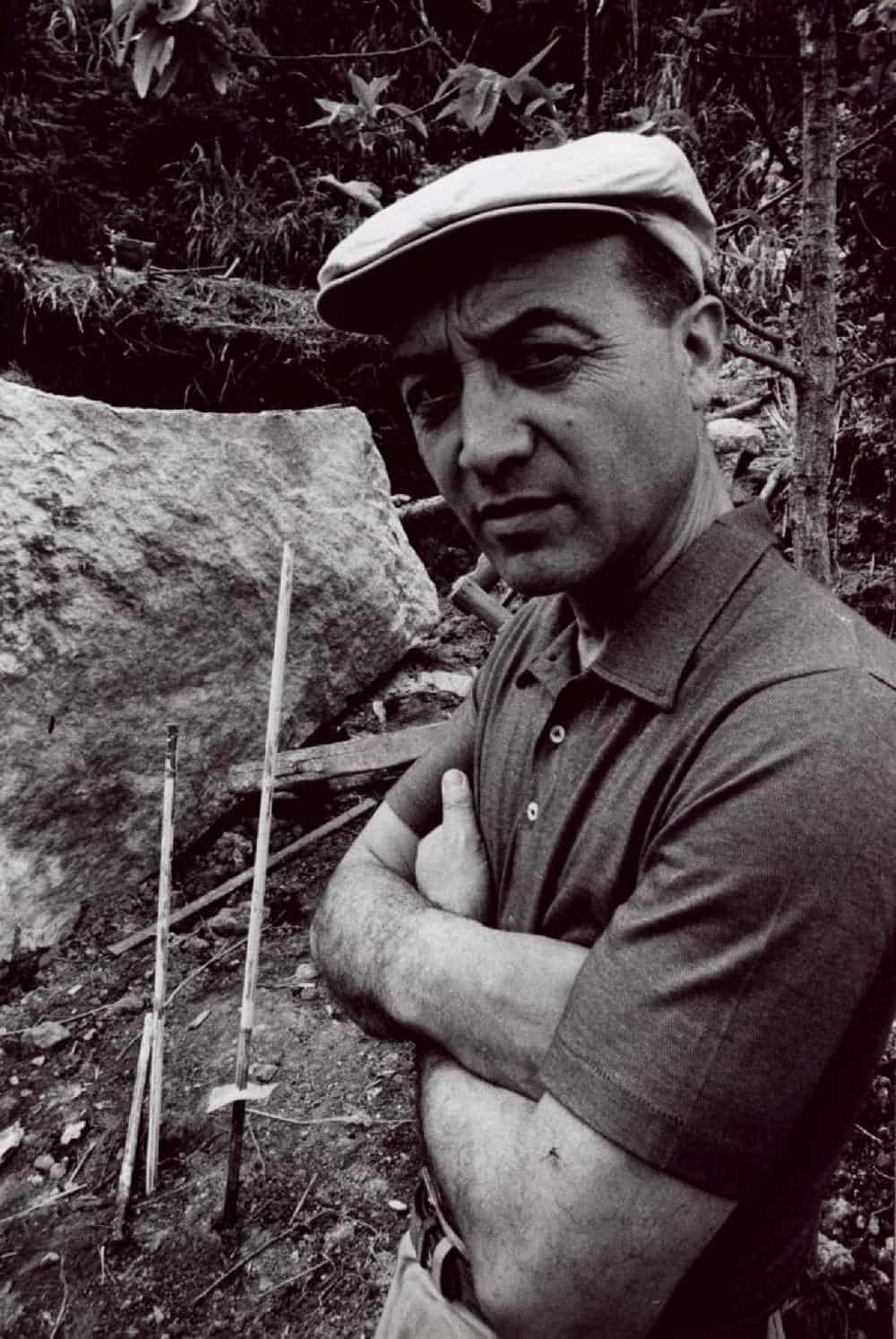
{
"article":
{
"title" : "Isamu Noguchi: A Legacy Split in Two",
"author" : "Noguchi Rights",
"category" : "essays",
"url" : "https://everythingispolitical.com/readings/isamu-noguchi-legacy-split-in-two",
"date" : "2025-06-16 14:26:00 -0400",
"img" : "https://everythingispolitical.com/uploads/25976_ca_object_representations_media_53490_page.jpg",
"excerpt" : "",
"content" : "Olmec and Muse (1985), basalt; by Isamu Noguchi, sold at auction in 2017 for $4.98 million. A title, a year, a material, an artist, the passage of time, a price. A legacy of cultures, a legacy of earth, a legacy of an artist, and “legacy” as a facetious pun—money or property left to the living by the dead.What does it mean to continue a legacy?Even a simple understanding of Isamu Noguchi’s work will illuminate some meaning from a piece like Olmec and Muse. It looks to ancient cultures and forms, it is crafted from the same material as the Mesoamerican Olmec heads, and it is codified by pointing back to the relationship humans have with the universe—the Muses. In 1985, the same year Olmec and Muse was made, Noguchi became the first living artist to establish a museum solely for his own work—a space intended to let the art exist for its own sake, free from the noise of the art world. Noguchi was born in 1904 before the invention of the airplane and died in 1988, just a few months prior to the invention of the World Wide Web. His life spanned the touchstones of the 20th century as ease of communication and travel grew on a global scale. Yet, despite these new horizons, the core personal, spiritual questions born into each individual remained present within the artist’s work. “Where was home? Why are we here? What will I leave behind?”Noguchi ran to the past and pushed toward the future to define the present. He learned from and worked with the peoples of the world—the laborers, the artists, the gardeners, the craftspeople, the activists, and the survivors. It was through global communities that he found himself as an individual.On one hand, Noguchi is most known for volunteering to be incarcerated in a Japanese-American concentration camp during WWII as an act of solidarity with west coast Japanese-Americans (Noguchi was living on the east coast at the time), while on the other hand, Noguchi is most famous for his Akari light sculptures—a staple in mid-century modern furniture. What many people may not know, however, is that these two hands hold one another. Having witnessed what it meant for people to recreate a home in a desert barracks with only the things they were able to carry, Noguchi designed all his paper lanterns to be flat packed and transported easily. The lamps are a modern continuation of tradition, handmade in Gifu by skilled craftspeople, they are affordable sculpture and a portal to transform any room into “home.”In 2017, the same year that Olmec and Muse set the record for the most expensive Noguchi piece sold at auction, The Noguchi Museum’s exhibition, Self-Interned, 1942, focused on the artist’s time, experience and the aftermath of being “interned.” Opening on January 18th, the exhibition was born into the first inauguration of Donald Trump. In February, 2017, The Day of Remembrance was the most highly attended day in the Museum’s history up until that point. Humanity and politics intersected at the museum, allowing people to join in community and to consider the most basic existential human questions, “Where was home? Why are we here? What will I leave behind?”This year, the New York City chapter of The Day of Remembrance Committee was completely absent from The Noguchi Museum. As an organization that highlights not just Japanese-American civil rights issues, but has also deeply considered the plight of the Palestinian people in the struggle against oppression, DOR NYC, along with other community organization, programmatic partners and artists cut their ties entirely with The Noguchi Museum after Director Amy Hau in collaboration with Deputy Director Jennifer Lorch and board Co-Chairs Susan Kessler and Spencer Bailey banned staff from wearing keffiyehs. The artist’s legacy had completely inverted on itself.So what happened in eight years? The truth is, behind closed doors, The Noguchi Museum was always rife with labor issues and in some ways, the keffiyeh ban can be seen as the straw that broke the camel’s back. (The longer history of racism, power imbalances, and a hostile work environment was exposed in a 70,000-word document we released last month.) The staff lived in dual realities—what the artist’s legacy was in principle versus how the museum’s board and top two leaders ran the institution in practice.Noguchi’s cultural prominence continued to rise. In 2023, his sculpture The Family (1956) set a new auction record, selling for $12.28 million. That same year, internal turmoil shook the museum: the CFO resigned in protest, citing unworkable and racist conditions, and several staff members were hospitalized. A recurring pattern of demand letters, racist firings, retaliation, and protest resignations have been disturbingly commonplace. The sanitization, depoliticization, and whitewashing of an artist is hardly a new story. In fact, it’s the norm. But what was surprising was the lengths to which fear could drive leadership to maintain “comfort.”Leadership clings to absolute power not for peace of mind, but because their sense of self depends on control. When collaboration itself is seen as a threat, power can only feel secure through the destruction of community. When the institution’s original purpose was to continue the legacy of the artist, we wonder whose legacy it is meant to protect now.The staff voted unanimously to unionize in January 2025, something that is not just rare, but telling. The community, now also acutely aware, has stood up for the staff, the artist and the future of the institution. The art world has always reduced historical activism to background decoration, and it has done so in the name of “legacy.” But as people of conscience, we know the other meaning of the word—we know what can’t be bought or sold.Our community demands letter, first delivered to the board on May 23rd, is still available to read and sign at bit.ly/NoguchiDemandsWe are continuing a legacy—a sculpture is more than a stone."
}
,
"relatedposts": [
{
"title" : "What We Can Learn from the Inuit Mapping of the Arctic",
"author" : "William Rankin",
"category" : "excerpts",
"url" : "https://everythingispolitical.com/readings/inuit-mapping-arctic",
"date" : "2025-12-02 12:49:00 -0500",
"img" : "https://everythingispolitical.com/uploads/Cover_EIP_Template-Inuit_Map.jpg",
"excerpt" : "This excerpt is from RADICAL CARTOGRAPHY by William Rankin, published by Viking, an imprint of Penguin Publishing Group, a division of Penguin Random House, LLC. Copyright © 2025 by William Rankin.",
"content" : "This excerpt is from RADICAL CARTOGRAPHY by William Rankin, published by Viking, an imprint of Penguin Publishing Group, a division of Penguin Random House, LLC. Copyright © 2025 by William Rankin.In 1994, the Berkeley geographer Bernard Nietschmann made a famous claim about the power of mapping in the global struggle for Indigenous rights. It was a claim about how the tools of historical oppression could be reclaimed by the oppressed: “More Indigenous territory has been claimed by maps than by guns. This assertion has its corollary: more Indigenous territory can be defended and reclaimed by maps than by guns.” The idea was that by putting themselves on the map—documenting their lives and their communities—Indigenous peoples would not be so easy to erase. Nietschmann was working in Central America, often heroically, during a time of violence and displacement, and he inspired a generation of researchers and activists interested in flipping the power structure of state-centric cartography on its head.But despite the spread of bottom-up mapping projects in the past 30 years, perhaps the most successful example of Indigenous mapping actually predates Nietschmann’s call to action. Just one year prior, in 1993, the Inuit of northern Canada signed a treaty creating the territory of Nunavut—the largest self-governing Indigenous territory in the world—and mapping was central to both the negotiation and the outcome. It remains one of the rare cases of Indigenous geographic knowledge decolonizing the world map.So why hasn’t the Inuit project been replicable elsewhere, despite decades more work on Indigenous mapping? The answer lies in the very idea of territory itself, and in particular in one of the most threatened parts of the Inuit landscape today: ice. The winter extent of Arctic sea ice reached a record low earlier this year, and a new low is predicted for the winter ahead. Yet the shrinking ice isn’t just an unshakable sign of Arctic warming; it’s also a poignant reminder of what Nietschmann got right—and what he missed—about the relationship between cartography and power. In particular, it shows how Inuit conceptions of space, place, and belonging are rooted in a dynamic, seasonal geography that’s often completely invisible on Western-style maps.The story begins in the 1970s, when the young Inuit leader Tagak Curley, today considered a “living father” of Nunavut, hired the Arctic anthropologist Milton Freeman to lead a collaborative mapping project of unprecedented scope and ambition. Freeman taught at McMaster University about an hour outside Toronto; he was white, but his wife, Mini Aodla Freeman, was Inuit (she was a translator and later a celebrated writer). Freeman assembled a team of other anthropologists and Arctic geographers—also white—to split the mapping into regions. They called their method the “map biography.” The goal was to capture the life history of every Inuit hunter in cartographic form, recording each person’s memories of where, at any point in their life, they had found roughly three dozen species of wildlife—from caribou and ptarmigan to beluga, narwhal, and seaweed. Each map biography would be a testimony of personal experience.After the mapping was split into regions, about 150 field-workers—almost all Inuit—traveled between 33 northern settlements with a stack of government-issued topographic maps to conduct interviews. Each hunter was asked to draw lines or shapes directly on the maps with colored pens or pencils. The interviewers stayed about 10 weeks in each settlement, visiting most hunters in their own homes, and the final participation rate was an astonishing 85 percent of all adult Inuit men. They collected 1,600 biographies in total, some on maps as large as 10 feet square.Then came the cartographers, back in Ontario: one professor and a team of about 15 students. The first map below (Figure 1) shows how the individual map biographies were transformed into summary maps, one for each community. For every species, the overlap of all hunters’ testimony became a single blob, and then blobs for all species were overlaid to make a complete map. The second map (Figure 2) shows one of the finished atlas pages along the Northwest Passage. The immediate impression is that the Arctic is in no way an empty expanse of barren land and unclaimed mineral riches. It is dense with human activity, necessary for personal and collective survival. The community maps combined to show almost uninterrupted Inuit presence stretching from northern Labrador to the Alaska border.Figure 1: Top left is a simplified version of a “map biography” from a single Inuit hunter, showing his birthplace and the places he hunted caribou, fox, wolf, grizzly bear, moose, and fish at various points in his life. (The original biography would have been drawn over a familiar government-issued topographic map.) The other three maps show how multiple biographies were then combined into patterned blobs for all hunters and all species. (Map courtesy of William Rankin/ Penguin Random House LLC.)Figure 2: A two-page spread from the finished atlas showing the seven kinds of animals hunted from the settlements of Igloolik and Hall Beach, in an area about 500 by 300 miles: caribou, polar bear, walrus, whale, fish, seal, and waterfowl. (Because of the large number of individual species recorded in the map biographies, some species were grouped together in the final maps.) The blobs are a strong, even overpowering figure atop an unusually subtle ground. Notice in particular how difficult it is to distinguish land and water areas, since the dark shading extends beyond coastlines even for individual species. This map in fact includes the Northwest Passage—the famous sea route around the tip of North America—but the crucial Fury and Hecla Strait (named after the two British ships that first learned of, but did not navigate, the passage in 1822) is almost entirely obscured. (Map courtesy of William Rankin/ Penguin Random House LLC.)Nothing about the cartography was meant to be subversive—or even controversial. For the cartographers, the only message was that the Inuit hunted a variety of species over large areas. But look again at the finished map in Figure 2. Yes, a foreground is layered over a background in the usual way, but the visual argument is strikingly different from a typical layered map in, say, a census atlas, where the foreground data doesn’t stray beyond crisp pre-existing borders. Here, in contrast, even the basic distinction between land and water is often obscure. The maps’ content is the facts of species and area; the maps’ argument is that Inuit culture is grounded in a substantially different understanding of territory than the one Western cartography was designed to show.As a result, this new atlas shifted the negotiations between the Inuit and the Canadian government decisively. Not only did the maps provide a legal claim to the Inuit-used land, documenting 750,000 square miles—an area the size of Mexico—but also a claim to the sea, showing an additional 325,000 square miles offshore.It took many years for the full implications to play out, but the erosion of the land–water boundary became central to the Inuit vision. At the time, wildlife on land was managed by the regional Northwest Territories government, while offshore marine species were the responsibility of centralized federal agencies. The Inuit used the atlas to win agreement for a new agency with equal responsibility over both. At the same time, the Inuit also improved their position by offering their offshore claims as evidence the Canadian government would use—not just in the 1980s, but even as recently as 2024—to resist foreign encroachment in the Northwest Passage. The final agreement in 1993 granted the Inuit $1.15 billion in cash, title to about 17 percent of the land in the “settlement area,” representation on several new management agencies, a share of all natural-resource revenue, broad hunting and fishing rights, and a promise that the territory of Nunavut would come into being on April 1, 1999.It’s easy to count this project as a success story, but it’s also important to remember that it depended both on the government’s own interest in negotiation and on the willingness of Indigenous peoples, or at least their leadership, to translate their sense of space onto a map, solidifying what had previously been fluid. It also meant abandoning claims to ancestral lands that had not been used in living experience and provoking new boundary disputes with neighboring, and previously amicable, Indigenous groups. These tradeoffs have led some scholars to critique mapping as only “drawing Indigenous peoples into a modern capitalist economy while maintaining the centrality of state power.” But for the Inuit, the alternatives seemed quite a bit worse.With the more recent proliferation of Indigenous mapping initiatives elsewhere—in Latin America, Africa, and Asia—the tradeoffs have been harder to evaluate. Most governments have shown little interest in addressing Indigenous claims, and when bottom-up mapping has been pushed instead by international nonprofits interested in environmental conservation, the downsides of mapping have often come without any of the upsides.Yet it’s not just the attitude of the state that’s been different; it’s also the cartography. In nearly all these other cases, the finished maps have shown none of the territorial inversion of the Inuit atlas. Instead, Indigenous knowledge is either overlaid on an existing base map in perfectly legible form, or it’s used to construct a new base map of a remarkably conventional sort, using the same visual vocabulary as Western maps.Did the Inuit project just show the data so clearly that its deeper implications were immediately apparent? No, not really, since the great irony here is that the cartographers were in fact quite dissatisfied. Follow-up surveys reached the conclusion that the atlas was only “moderately successful” by their usual mapmaking standards.The Inuit atlas was a kind of happy accident—one that doesn’t conform to any of the usual stories about Indigenous mapping, in Canada or elsewhere. The lesson here isn’t that maps should be as Indigenous as possible, or that they should be as orthodox as possible. These maps were neither. My take is simpler: the atlas shows that maps can, in fact, support alternative conceptions of space—and that showing space in a different way is crucial.The possibilities aren’t endless, but they’re broader than we might think. Plotting different sorts of data is a necessary step, but no less important are the relationships between that data and the assumptions of what lies below. For the Inuit, these assumptions were about land, water, and territory. These were in the background both visually and politically, and they were upstaged by an unexpectedly provocative foreground. The layers did not behave as they were meant to, and despite the tradeoffs, they allowed an Indigenous community to fight for their home and their way of life."
}
,
{
"title" : "Malcolm X and Islam: U.S. Islamophobia Didn’t Start with 9/11",
"author" : "Collis Browne",
"category" : "essays",
"url" : "https://everythingispolitical.com/readings/malcolm-x-and-islam",
"date" : "2025-11-27 14:58:00 -0500",
"img" : "https://everythingispolitical.com/uploads/life-malcolm-3.jpg",
"excerpt" : "",
"content" : "Anti-Muslim hate has been deeply engrained and intertwined with anti-Black racism in the United States for well over 60 years, far longer than most of us are taught or are aware.As the EIP team dug into design research for the new magazine format of our first anniversary issue, we revisited 1960s issues of LIFE magazine—and landed on the March 1965 edition, published just after the assassination of Malcolm X.The reporting is staggering in its openness: blatantly anti-Black and anti-Muslim in a way that normalizes white supremacy at its most fundamental level. The anti-Blackness, while horrifying, is not surprising. This was a moment when, despite the formal dismantling of Jim Crow, more than 10,000 “sundown towns” still existed across the country, segregation remained the norm, and racial terror structured daily life.What shocked our team was the nakedness of the anti-Muslim propaganda.This was not yet framed as anti-Arab in the way Western Islamophobia is often framed today. Arab and Middle Eastern people were not present in the narrative at all. Instead, what was being targeted was organized resistance to white supremacy—specifically, the adoption of Islam by Black communities as a source of political power, dignity, and self-determination. From this moment, we can trace a clear ideological line from anti-Muslim sentiment rooted in anti-Black racism in the 1960s to the anti-Arab, anti-MENA, and anti-SWANA racism that saturates Western culture today.The reporting leaned heavily on familiar colonial tropes: the implication of “inter-tribal” violence, the suggestion that resistance to white supremacy is itself a form of reverse racism or inherent aggression, and the detached, almost smug tone surrounding the violent death of a cultural leader.Of course, the Nation of Islam and Elijah Muhammad represent only expressions within an immense and diverse global Muslim world—spanning Morocco, Sudan, the Gulf, Iraq, Pakistan, Indonesia, and far beyond. Yet U.S. cultural and military power has long blurred these distinctions, collapsing complexity into a singular enemy image.It is worth naming this history clearly and connecting the dots: U.S. Islamophobia did not begin with 9/11. It is rooted in a much older racial project—one that has always braided anti-Blackness and anti-Muslim sentiment together in service of white supremacy, at home and abroad."
}
,
{
"title" : "The Billionaire Who Bought the Met Gala: What the Bezoses’ Check Means for Fashion’s Future",
"author" : "Louis Pisano",
"category" : "essays",
"url" : "https://everythingispolitical.com/readings/the-billionaire-who-bought-the-met-gala",
"date" : "2025-11-27 10:41:00 -0500",
"img" : "https://everythingispolitical.com/uploads/Cover_EIP_TBesos_MET_Galajpg.jpg",
"excerpt" : "On the morning of November 17, 2025, the Metropolitan Museum of Art announced that Jeff Bezos and Lauren Sánchez Bezos would serve as the sole lead sponsors of the 2026 Met Gala and its accompanying Costume Institute exhibition, “Costume Art”. Saint Laurent and Condé Nast were listed as supporting partners. To be clear, this is not a co-sponsorship. It is not “in association with.” It is the first time in the modern history of the gala that the headline slot, previously occupied by Louis Vuitton, TikTok, or a discreet old-money surname, has been handed to a tech billionaire and his wife. The donation amount remains undisclosed, but sources familiar with the negotiations place it comfortably north of seven figures, in line with the checks that helped the event raise $22 million last year.",
"content" : "On the morning of November 17, 2025, the Metropolitan Museum of Art announced that Jeff Bezos and Lauren Sánchez Bezos would serve as the sole lead sponsors of the 2026 Met Gala and its accompanying Costume Institute exhibition, “Costume Art”. Saint Laurent and Condé Nast were listed as supporting partners. To be clear, this is not a co-sponsorship. It is not “in association with.” It is the first time in the modern history of the gala that the headline slot, previously occupied by Louis Vuitton, TikTok, or a discreet old-money surname, has been handed to a tech billionaire and his wife. The donation amount remains undisclosed, but sources familiar with the negotiations place it comfortably north of seven figures, in line with the checks that helped the event raise $22 million last year.Within hours of the announcement, the Met’s Instagram post was overrun with comments proclaiming the gala “dead.” On TikTok and X, users paired declarations of late-stage capitalism with memes of the museum staircase wrapped in Amazon boxes. Not that this was unexpected. Anyone paying attention could see it coming for over a decade.When billionaires like Bezos, whose Amazon warehouses reported injury rates nearly double the industry average in 2024 and whose fashion supply chain has been linked to forced labor and poverty wages globally, acquire influence over prestigious institutions like the Met Museum through sponsorships, it risks commodifying fashion as a tool for not only personal but corporate image-laundering. To put it simply: who’s going to bite the hand that feeds them? Designers, editors, and curators will have little choice but to turn a blind eye to keep the money flowing and the lights on.Back in 2012, Amazon co-chaired the “Schiaparelli and Prada” gala, and honorary chair Jeff Bezos showed up in a perfectly respectable tux with then-wife MacKenzie Scott by his side and an Anna Wintour-advised pocket square. After his divorce from Scott in 2019, Bezos made a solo appearance at the Met Gala, signaling that he was becoming a familiar presence in fashion circles on his own. Of course, by that point, he already had Lauren Sánchez. Fast forward to 2020: print advertising was crumbling, and Anna Wintour co-signed The Drop, a set of limited CFDA collections sold exclusively on Amazon, giving the company a veneer of fashion credibility. By 2024, Sánchez made her Met debut in a mirrored Oscar de la Renta gown personally approved by Wintour, signaling that the Bezos orbit was now squarely inside the fashion world.Then, the political world started to catch up, as it always does. In January 2025, Sánchez and Bezos sat three rows behind President-elect Donald Trump at the inauguration. Amazon wrote a one-million-dollar check to Trump’s inaugural fund, and Bezos, once mocked by Trump as “Jeff Bozo,” publicly congratulated Trump on an “extraordinary political comeback.” By June 2025, Bezos and Sánchez became cultural and political mainstays: Sánchez married Bezos in Venice, wearing a Dolce & Gabbana gown Wintour had helped select. This landed Sánchez the digital cover of American Vogue almost immediately afterward. Wintour quietly handed day-to-day control of the magazine to Chloe Malle but kept the Met Gala, the global title, and her Condé Nast equity stake, cementing a new era of fashion power where money, influence, and optics are inseparable.Underneath all of it, the quiet hum of Amazon’s fashion machine continued to whirr. By 2024, the company already controlled 16.2 percent of every dollar Americans spent on clothing, footwear, and accessories—more than Walmart, Target, Macy’s, and Nordstrom combined. That same year, it generated $34.7 billion in U.S. apparel and footwear revenue that year, with the women’s category alone on pace to top $40 billion. No legacy house has ever had that volume of real-time data on what people actually try on, keep, or return in shame. Amazon can react in weeks rather than seasons, reordering winning pieces, tweaking existing ones, and killing unpopular options before they’re even produced at scale.Wintour did more than simply observe this shift; she engineered a soft landing by bringing Amazon in when it was still somewhat uncool and seen mostly as a discount retailer, lending it credibility when it needed legitimacy, and spending the last two years turning Sánchez from tabloid footnote to Vogue cover star. The Condé Nast sale rumors that began circulating in July 2025, complete with talk of Wintour cashing out her equity and Sánchez taking a creative role, have been denied by every official mouthpiece. But they have also refused to die, because the timeline is simply too tidy.The clearest preview of what billionaire ownership can do to a cultural institution remains Bezos’ other pet project, The Washington Post. Bezos bought it for $250 million in 2013, saved it from bankruptcy, and built it into a profitable digital operation with 2.5 million subscribers. Then, in October 2024, he personally blocked a planned editorial endorsement of Kamala Harris. More than 250,000 subscribers canceled in the following days. By February 2025, the opinion section was restructured around “personal liberties and free markets,” triggering another exodus and the resignation of editorial page editor David Shipley. Former executive editor Marty Baron called it “craven.” The timing, just months after Bezos began warming to the incoming Trump administration, was not lost on anyone. The story didn’t stop there: in the last few days, U.S. Vice President J.D. Vance revealed he had texted Bezos suggesting the hiring of a right-leaning Breitbart journalist, Matthew Boyle, to run the Post’s political coverage. This is a clear signal of how staffing decisions at a storied paper now sit within the same power matrix that funds the Met Gala and shapes culture, media, and politics alike. It’s a tangled, strategic web—all of Bezos’ making.It’s curious that, in the same 30-day window that the Trump DOJ expanded its antitrust inquiry into Amazon, specifically how its algorithms favor its own products over third-party sellers, including many fashion brands, the MET, a city-owned museum, handed the keys of its marquee event to the man whose company now wields outsized influence over designers’ fortunes and faces regulatory scrutiny from the administration he helped reinstall. This is not sponsorship; it’s leverage. Wintour once froze Melania Trump out of Vogue because she could afford to.But she cannot freeze out Sánchez or Bezos. Nor does she want to.So on the first Monday in May, the museum doors will open as they always do for the Met Gala. The carpet will still be red (or whatever color the theme demands). The photographs of celebrities posing in their interpretations of “Costume Art” will still break the internet. Andrew Bolton’s exhibition, roughly 200 objects tracing the dressed body across five millennia, displayed in the newly renamed Condé Nast Galleries, will still be brilliant. But the biggest check will come from the couple who already control 16 percent of America’s clothing spend, who own The Washington Post, and who sat three rows behind Trump at the inauguration. Everything else, guest list tweaks, livestream deals, shoppable moments, will flow from that single source of money and power. That is who now has the final word on the most influential night in American fashion."
}
]
}










